ASUS ROG Maximus XIII Hero Review: Everything for Rocket Lake
by Gavin Bonshor on July 9, 2021 9:00 AM ESTGaming Performance
For Z590 we are running using Windows 10 64-bit with the 20H2 update.
Civilization 6
Originally penned by Sid Meier and his team, the Civilization series of turn-based strategy games are a cult classic, and many an excuse for an all-nighter trying to get Gandhi to declare war on you due to an integer underflow. Truth be told I never actually played the first version, but I have played every edition from the second to the sixth, including the fourth as voiced by the late Leonard Nimoy, and it a game that is easy to pick up, but hard to master.
Benchmarking Civilization has always been somewhat of an oxymoron – for a turn based strategy game, the frame rate is not necessarily the important thing here and even in the right mood, something as low as 5 frames per second can be enough. With Civilization 6 however, Firaxis went hardcore on visual fidelity, trying to pull you into the game. As a result, Civilization can taxing on graphics and CPUs as we crank up the details, especially in DirectX 12.
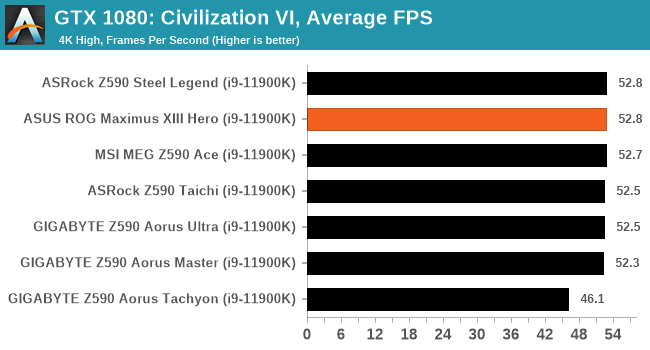
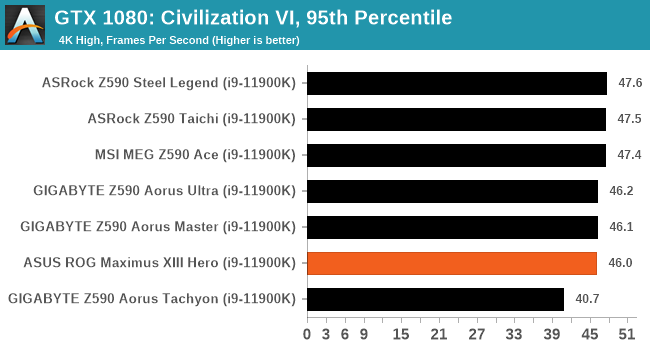
Shadow of the Tomb Raider (DX12)
The latest installment of the Tomb Raider franchise does less rising and lurks more in the shadows with Shadow of the Tomb Raider. As expected this action-adventure follows Lara Croft which is the main protagonist of the franchise as she muscles through the Mesoamerican and South American regions looking to stop a Mayan apocalyptic she herself unleashed. Shadow of the Tomb Raider is the direct sequel to the previous Rise of the Tomb Raider and was developed by Eidos Montreal and Crystal Dynamics and was published by Square Enix which hit shelves across multiple platforms in September 2018. This title effectively closes the Lara Croft Origins story and has received critical acclaims upon its release.
The integrated Shadow of the Tomb Raider benchmark is similar to that of the previous game Rise of the Tomb Raider, which we have used in our previous benchmarking suite. The newer Shadow of the Tomb Raider uses DirectX 11 and 12, with this particular title being touted as having one of the best implementations of DirectX 12 of any game released so far.
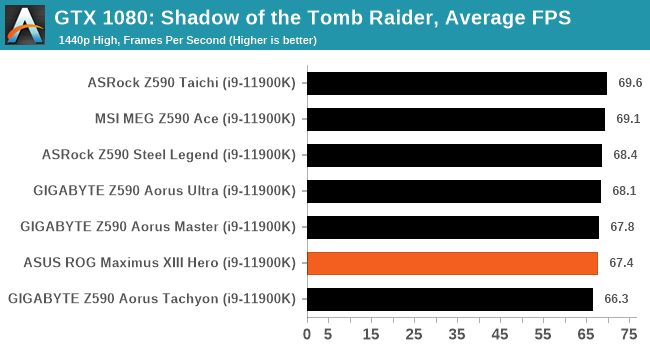
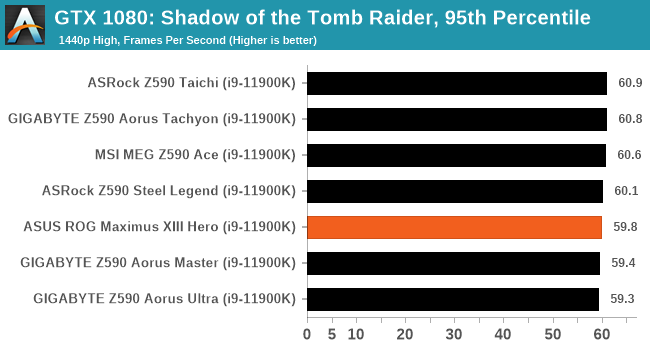
Strange Brigade (DX12)
Strange Brigade is based in 1903’s Egypt and follows a story which is very similar to that of the Mummy film franchise. This particular third-person shooter is developed by Rebellion Developments which is more widely known for games such as the Sniper Elite and Alien vs Predator series. The game follows the hunt for Seteki the Witch Queen who has arisen once again and the only ‘troop’ who can ultimately stop her. Gameplay is cooperative-centric with a wide variety of different levels and many puzzles which need solving by the British colonial Secret Service agents sent to put an end to her reign of barbaric and brutality.
The game supports both the DirectX 12 and Vulkan APIs and houses its own built-in benchmark which offers various options up for customization including textures, anti-aliasing, reflections, draw distance and even allows users to enable or disable motion blur, ambient occlusion and tessellation among others. AMD has boasted previously that Strange Brigade is part of its Vulkan API implementation offering scalability for AMD multi-graphics card configurations. For our testing, we use the DirectX 12 benchmark.
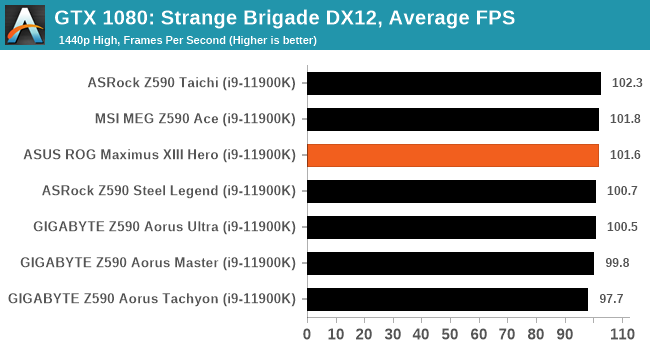
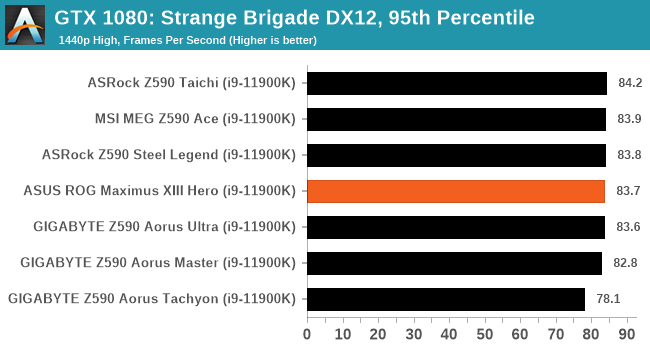


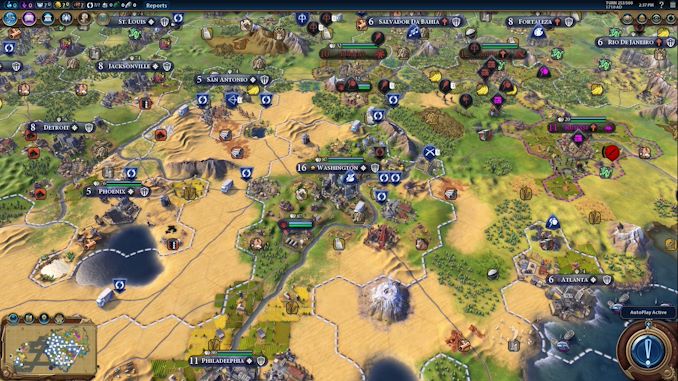
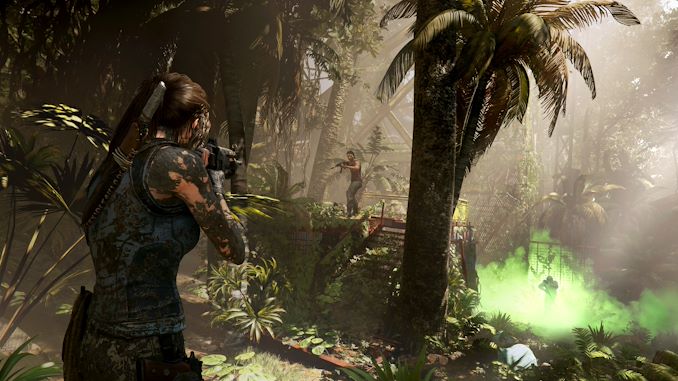









28 Comments
View All Comments
A5 - Friday, July 9, 2021 - link
$500 isn't mid-range by any stretch of the imagination, except in the wildest dreams of ASUS' CFO.shabby - Friday, July 9, 2021 - link
Lol indeed, wake up Gavin.Ian Cutress - Friday, July 9, 2021 - link
It's in ASUS' 'mid-range' 😉eastcoast_pete - Friday, July 9, 2021 - link
Which keeps many of us looking at manufacturers who haven't lost touch with reality. Now, if they'd throw in a 3060 for $ 1, I'd buy one in a heartbeat.shabby - Saturday, July 10, 2021 - link
Oh ok, guess my asus x570 gaming plus wifi is in the poor range section...$100 homeless range
$200 poor range
$300 low end
$500 mid range
$800 high end
$1000 baller range
lilkwarrior - Monday, July 12, 2021 - link
That's actually a pretty accurate scale. $500 being mid-range more than makes sense–especially with 4K-oriented workflows these motherboards are increasingly catering too. All prices of PC components are rising to also account for increased tariffs, demand, & so on.If you want a motherboard with Thunderbolt 4, multiple M.2 slots, & Wifi6E, you should absolutely expect a price around $500 these days.
Makaveli - Friday, July 9, 2021 - link
The AMD Hero's boards also in the same price range so not surprised. But I choose to be a hero to my wallet and choose a board in the $300-$350 price range. For me if i'm spending $500 on a motherboard it will be for a build using ECC memory.Exodite - Saturday, July 10, 2021 - link
Just got myself a Gigabyte B550 Vision D-P for that reason (ECC support) and it was half that. :)Looking at the current Intel and AMD platforms I see little reason to choose X570 over B550, you pretty much have to need the chipset PCIe 4.0, and none to choose Z590 over B560.
Pricing seem more out of hand on Intel than AMD though, generally speaking. There are decently priced X570 boards here in Sweden but Z590 is hard to get with reasonable specs sub-$500.
Destoya - Sunday, July 11, 2021 - link
I bought my Crosshair VI Hero for $249 new. It's only in the last couple of generations that these companies have decided to inflate the prices to ludicrous amounts.Spunjji - Monday, July 12, 2021 - link
They've cottoned on to that segment of users that think something is inherently better just because they spent more money on it 🤷♂️